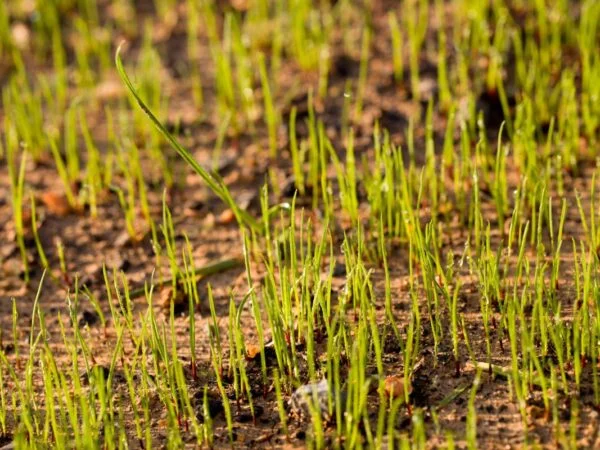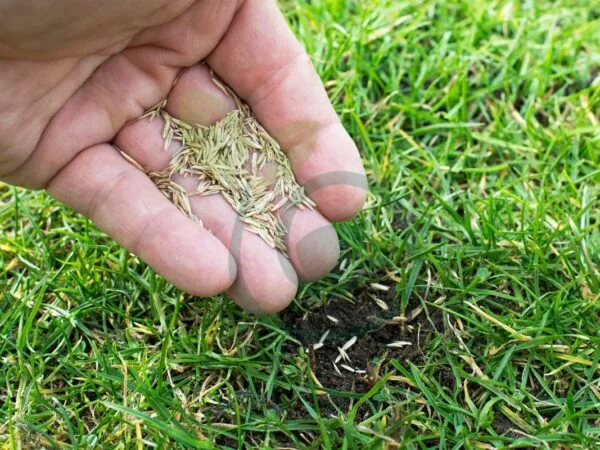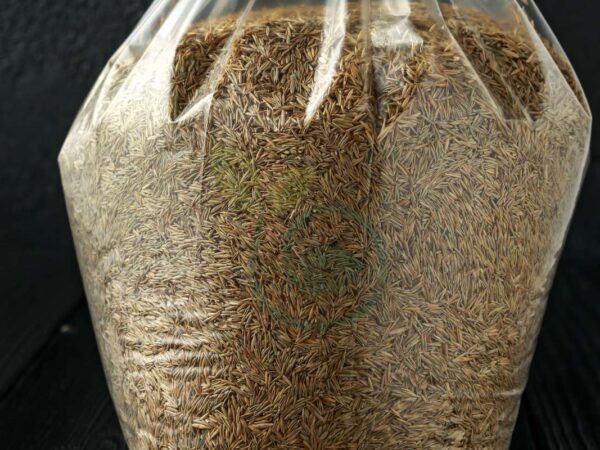Looking for the best grass seed to use but overwhelmed by the options available? What if you could find the perfect match for your lawn effortlessly with the right grass seed? Imagine having lush, green grass that's envy-worthy without all the guesswork. With our guide, you'll discover top-notch grass seeds that will transform your yard into a vibrant oasis. Say goodbye to patchy lawns and hello to a picturesque landscape that will make your neighbors green with envy. Ready to take your lawn to the next level?
Key Takeaways
- Choose the right grass seed: Select a grass seed type that suits your climate and soil conditions for optimal growth.
- Consider quick-growth varieties: If you desire a lush lawn quickly, opt for fast-growing grass seed varieties for rapid results.
- Follow a seasonal planting guide: Plant grass seed according to the recommended seasons to ensure successful germination and growth.
- Prioritize lawn care essentials: Regular watering, fertilizing, and maintenance are crucial for nurturing healthy grass growth.
- Explore specialized seed selections: For specific needs like shaded areas or high-traffic zones, consider specialized grass seed blends for better results.
- Strive for a greener tomorrow: By selecting the best grass seed for your lawn, you contribute to a more environmentally friendly landscape.
Grass Seed Basics
Types Overview
When choosing grass seed for lawns, consider various plant choices like Bermuda, Kentucky Bluegrass, and Fescue. Each type has distinct characteristics and ideal use scenarios. Bermuda grass thrives in warm climates, while Fescue is suitable for cooler regions.
Growth Rates
Quick-Growing
For those seeking rapid results, quick-growing seeds like Ryegrass or Bahia grass are excellent choices. These seeds germinate swiftly due to favorable conditions like adequate moisture and sunlight. Regular watering and fertilization can maintain their growth pace.
Slow-Growing
Conversely, slow-growing varieties such as Centipede grass require patience as they take longer to establish. Factors contributing to slow growth include limited sunlight exposure and poor soil quality. To nurture these types, ensure consistent watering and proper soil enrichment.
Climate Adaptation
Different grass species exhibit varying abilities to adapt to diverse climates. Warm-season grasses like Zoysia, suitable for hot regions and full sun, handle temperatures well. In contrast, cool-season grasses such as Bentgrass thrive in cooler environments with adequate moisture levels.
Selecting Your Seed
Sunlight Needs
Different types of grass seeds have varying sunlight requirements. Some prefer full sun, while others thrive in partial shade. When choosing a seed for your lawns, consider the amount of sunlight your lawn receives daily.
For areas with ample sunlight, opt for seeds like Bermuda grass or Zoysia grass that flourish in full sun conditions. In contrast, shaded regions benefit from seeds such as Fine Fescue or Kentucky Bluegrass that tolerate less sunlight.
To manage sunlight exposure effectively in lawns, prune nearby trees or structures casting shadows on your lawn. This ensures that your chosen seed receives the required sunlight for optimal growth.
Soil Types
Grass seeds exhibit preferences for specific soil types to thrive successfully. For example, St. Augustine grass prefers sandy soils with good drainage, while Centipede grass thrives in acidic soils common in Southern regions.
Prepare your soil according to the needs of the chosen seed type by testing pH levels and adding necessary nutrients. Good soil quality is essential for promoting robust root development and overall plant health when establishing new grass.
The quality of soil, sun, and fertilizer mix directly impacts the growth and vitality of your selected grass seed. Ensure proper aeration and drainage to prevent waterlogging, which can hinder root growth and lead to unhealthy turf.
Maintenance Levels
When selecting a grass seed for lawns, consider the maintenance level, sun, fertilizer mix, and square feet it requires to stay healthy and vibrant throughout the seasons. High-maintenance options like Kentucky Bluegrass demand regular watering, fertilizing, and mowing for optimal growth.
For those seeking low-maintenance alternatives for lawns, consider seed varieties like Tall Fescue or Perennial Ryegrass that are more forgiving with irregular watering schedules and minimal fertilizer mix needs.
Maintaining high-maintenance seeds involves frequent monitoring for pests and diseases along with consistent care practices to ensure lush greenery. On the other hand, low-maintenance options offer convenience without compromising on aesthetics.
Best Seeds for Climate
Cool Season Options
Cool-season grass seed varieties like Kentucky Bluegrass and Fescue are ideal for regions with cold winters for lawns. These grasses thrive in cooler temperatures, making them perfect for planting in early spring or fall. Planting cool-season grasses can result in lush green lawns that withstand colder climates well.
When you opt for cool-season grasses for lawns, you benefit from their ability to grow rapidly during the cooler months. This rapid growth helps the grass establish quickly, filling in bare spots and creating a dense turf cover. Cool-season grasses have excellent cold tolerance, allowing them to stay green throughout much of the winter season.
For optimal growth of cool-season grasses, ensure they receive adequate sunlight and are planted in well-draining soil. Watering these seeds regularly is essential to promote healthy root development and overall lawn growth. It's recommended to fertilize cool-season grasses in early spring and late fall to support their growth cycles effectively.
Warm Season Choices
If you reside in a region with hot summers, consider planting warm-season grass seed options such as Bermuda Grass or Zoysia Grass. These varieties thrive in warmer climates and exhibit excellent heat tolerance compared to other types of grass seeds. Planting warm-season grasses can result in vibrant green lawns that remain resilient during hot weather conditions.
Warm-season grasses possess characteristics like deep root systems that enable them to withstand drought conditions better than cool-season varieties. Their ability to go dormant during extreme heat helps them conserve energy and bounce back once favorable growing conditions return.
To ensure successful establishment of warm-season grasses, plant them when soil temperatures are consistently above 65°F (18°C). Proper watering is crucial during the initial stages of growth, as these seeds require sufficient moisture for germination and root development. Regular mowing at the recommended height promotes healthy growth patterns and contributes to a lush lawn appearance.
Quick-Growth Varieties
Fast Germination
Fast germination is vital for a lush lawn. Improved varieties like Kentucky bluegrass and perennial ryegrass are known for their rapid germination. These seeds typically sprout within 5-10 days, ensuring quick coverage of bare patches.
Factors influencing germination speed include soil temperature, moisture levels, and seed quality. Ensure the soil is warm enough (above 50°F) and consistently moist but not waterlogged for optimal germination. Planting in early spring or fall when temperatures are moderate can also enhance germination rates.
To ensure successful germination of seeds, prepare the soil by removing debris and loosening the top layer. Spread the seeds evenly using a spreader or by hand, then lightly rake them into the soil to ensure good seed-to-soil contact. Water seed gently but frequently to keep the soil moist until grass shoots appear.
Early Establishment
Early establishment plays a crucial role in developing a healthy lawn quickly. Improved varieties such as tall fescue and fine fescue excel in early establishment due to their vigorous growth habits. These grasses establish strong root systems rapidly from seed, leading to robust turf coverage.
Promoting early establishment involves proper watering, fertilization, and maintenance practices. Water newly seeded areas lightly multiple times a day to keep the soil consistently moist without causing puddles or runoff. Apply a starter fertilizer rich in phosphorus to encourage root development during this critical stage.
The importance of early establishment lies in creating a dense turf that can outcompete weeds and withstand environmental stressors effectively. A well-established lawn not only looks visually appealing but also requires less maintenance over time compared to poorly established ones.
Techniques for aiding quick establishment of grass seeds include overseeding existing lawns to fill in sparse areas quickly with new growth. Using mulch or straw coverings can help retain moisture around seeds while protecting them from birds or harsh weather conditions that may hamper growth.
Seasonal Planting Guide
Spring Recommendations
When planting grass seeds in the spring, consider using varieties like Kentucky bluegrass and perennial ryegrass. These seeds thrive in the warmer temperatures of spring, promoting quicker germination. For a vibrant lawn, opt for these grasses.
Advantages of planting grass seeds in the spring include optimal soil conditions and ample sunlight for seed growth. With increased daylight hours and moderate temperatures, seeds establish quickly and develop strong root systems.
To ensure your spring-planted lawn flourishes, follow these spring lawn care tips: regularly water the area to keep the soil moist but not waterlogged, mow at a higher setting to encourage deeper root growth, and fertilize with a balanced fertilizer to promote healthy grass development.
Fall Planting Tips
For successful fall planting of grass seeds, choose cool-season varieties such as fescue or bentgrass. The cooler weather during fall aids in seed germination and establishment before winter arrives. Consider overseeding existing lawns for thicker coverage.
Fall is an ideal time for planting grass seeds due to cooler temperatures that reduce heat stress on young seedlings. Moisture levels are typically higher in autumn, providing natural irrigation for newly planted seeds.
Prepare your lawn for fall planting by aerating the soil to improve air circulation and water absorption. Remove any thatch buildup to prevent suffocation of new seedlings. Applying a layer of compost can enrich the soil with essential nutrients.
Lawn Care Essentials
Fertilizers
Fertilizers play a crucial role in grass seed growth by providing essential nutrients like nitrogen, phosphorus, and potassium. These nutrients promote strong root development and vibrant green foliage. Different grass seed types require specific fertilizers to thrive effectively. For instance, cool-season grasses benefit from a fertilizer high in nitrogen for rapid growth during the spring and fall seasons.
It's important to follow guidelines based on the type of grass seed being used. Warm-season grasses, such as Bermuda or Zoysia, thrive with a light application of fertilizer every 6-8 weeks during their active growing season. On the other hand, cool-season grasses prefer fertilization in early spring and late fall for optimal results.
Watering Techniques
Effective watering techniques are vital for successful grass seed growth. Proper watering ensures that seeds germinate correctly and roots establish deeply in the soil. It is essential to water consistently but avoid overwatering, which can lead to diseases like root rot or fungus issues.
In lawn care, proper watering is key to maintaining a healthy lawn throughout the year. Grass seeds need consistent moisture levels to germinate and grow successfully. Depending on the type of grass seed planted, watering schedules may vary. For example, warm-season grasses typically require more frequent but lighter watering sessions compared to cool-season grasses, which prefer deep but infrequent watering.
Specialized Seed Selections
Shade-Tolerant Varieties
Shade-tolerant grass seeds are essential for areas with limited sunlight exposure. These varieties, such as fine fescue and creeping red fescue, thrive in shaded environments. Growing grass in shade poses challenges due to reduced sunlight, leading to sparse growth. To combat this, consider overseeding with shade-tolerant seed mixtures to ensure a lush lawn. Regularly watering and proper fertilization can also aid in maintaining healthy shade-tolerant grass.
Drought-Resistant Types
Opting for drought-resistant seed mix is crucial for regions prone to water scarcity. Species like buffalo grass and tall fescue exhibit excellent drought tolerance. Drought-resistant grass varieties typically have deep root systems that enable them to access water from lower soil layers efficiently. To conserve water while keeping your lawn vibrant, consider reducing watering frequency but increasing the duration each time you irrigate. Mowing at higher heights helps retain moisture in the soil.
Achieving Golf Course Lawns
Premium Seed Choices
Consider premium seed options like Kentucky Bluegrass or Fescue for lush, durable lawn areas. These seeds offer superior quality and resilience against heavy foot traffic.
Investing in premium grass seeds ensures a dense, vibrant lawn that enhances your outdoor space. High-quality seeds promote turf grasses that are disease-resistant and require less water and maintenance.
Selecting premium seeds guarantees a healthier lawn with improved aesthetics, making it ideal for both play and relaxation in your yard.
Professional Maintenance Tips
To maintain golf course-like perfection, regular mowing is essential to keep your lawn pristine. Optimal mowing height varies based on the type of grass you have planted in your yard.
Aerating the soil allows nutrients to penetrate deeply, promoting strong root growth for a lush lawn. Proper watering techniques are crucial for healthy turf grasses; deep but infrequent watering encourages deep root development.
Professional lawn care practices include overseeding bare spots with new grass seed to ensure uniform coverage across the yard. Fertilizing at the right times of the year boosts growth and color vibrancy of the lawn.
For expert-level results, consider professional lawn maintenance services that offer specialized treatments tailored to your specific lawns needs. These services can provide targeted solutions for common issues such as weeds or pests plaguing your yard.
A Greener Tomorrow
Eco-Friendly Practices
To promote a greener environment, consider adopting eco-friendly lawn care practices such as using grass seed. By using organic fertilizers and natural pest control methods, you can maintain a lush lawn while minimizing harm to the ecosystem. Embracing sustainable techniques not only benefits your yard but also contributes positively to the environment.
Switching to environmentally sustainable lawn care options offers numerous advantages. These include reducing chemical runoff into water sources, supporting biodiversity by attracting beneficial insects, and creating a healthier outdoor space for your family and pets. Embrace these alternatives to conventional products for a green color without harming the environment.
- Use organic fertilizers
- Opt for natural pest control methods
- Support biodiversity in your yard
Sustainable Growth Tips
For sustainable growth of grass seeds, ensure proper watering and sunlight exposure. Implementing a regular maintenance routine that includes mowing at the correct height and aerating the soil promotes healthy grass growth naturally. Prioritize sustainability in all aspects of lawn care for long-lasting results.
Maintaining an eco-conscious approach to lawn care is crucial for preserving our planet's health. By choosing sustainable practices such as composting yard waste and using rain barrels for irrigation, you contribute to reducing waste and conserving resources effectively. Create a sustainable lawn maintenance routine that aligns with nature's rhythms.
- Water grass seeds adequately
- Mow at appropriate heights
- Aerating soil improves growth
Final Remarks
You've learned the essentials of selecting the best grass seed for your lawn, considering factors like climate, growth rate, and maintenance. By choosing the right seed based on your specific needs and environment, you can achieve a lush and vibrant lawn that enhances your outdoor space. Remember to follow the seasonal planting guide for optimal results and consider specialized seed selections for unique requirements.
As you embark on this journey towards a greener tomorrow, remember that proper lawn care is key to maintaining a healthy and beautiful yard. Implement the tips and insights shared in this guide to nurture your grass effectively. Your dedication will not only result in a stunning lawn but also contribute to a more sustainable environment for all. Start sowing the seeds of a healthier, greener future today!
Frequently Asked Questions
What are the key factors to consider when selecting grass seed?
When choosing grass seed, consider your climate, soil type, sun exposure, and intended use. Opt for high-quality seeds that match your region's conditions for best results.
Which grass seed variety is best suited for quick growth?
For rapid establishment, opt for quick-growth varieties like perennial ryegrass or Kentucky bluegrass seed. These types germinate quickly and provide lush coverage within a few weeks of planting.
How can I ensure my lawn stays green throughout the year?
To maintain a vibrant green lawn all year round, select a combination of cool-season and warm-season grasses based on your region's climate. Regular watering, fertilizing, and proper mowing techniques also play crucial roles in keeping your lawn healthy.
Are there specialized grass seed options available for specific needs?
Yes, specialized seeds cater to unique requirements such as drought resistance, shade tolerance, or low-maintenance lawns. Consult with local experts or nurseries to find the most suitable seed variety for your specific needs.
How can I achieve golf course-like perfection in my lawn?
Achieving golf course-quality lawns requires meticulous care including regular watering schedules, precise mowing heights tailored to the grass type, strategic fertilization plans, and consistent maintenance practices to keep your turf healthy and pristine.
Image Source: Paid image from CANVA




